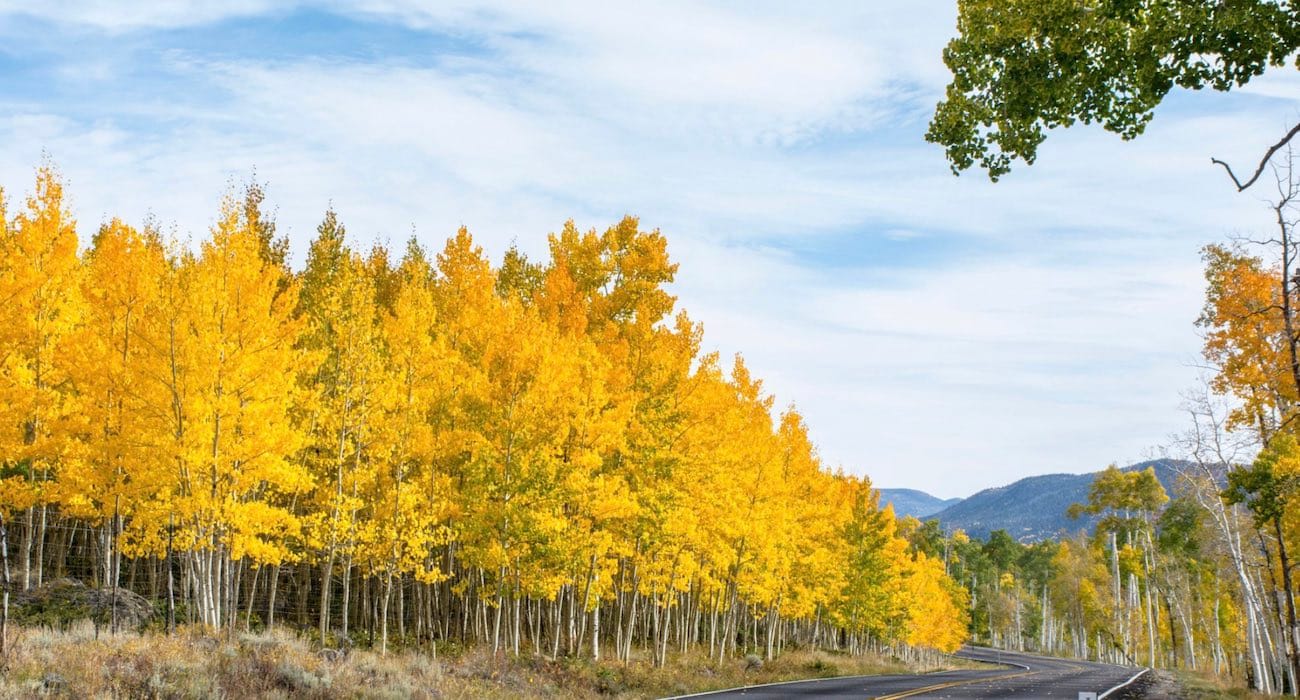It’s the Largest Living Organism on Earth, and It’s Hiding in Plain Sight in Utah

“The largest – and possibly oldest – living organism.
NOTE: this article was originally published to the Deseret News’ Apple News channel on August 15, 2021. It was written by Lee Benson.
The Pando Aspen Grove near Fish Lake in south central Utah has been existing, and minding its own business, since at least the last Ice Age.
What weighs 13 million pounds, has been around since at least the last Ice Age, is the largest living organism on Earth, and until 50 years ago nobody knew it was there?
Hint: It’s located right here in Utah; and it’s possible one of its relatives may be planted in your backyard.
The answer is the Pando Aspen Grove in south-central Utah. To get there drive south of Richfield on state Route 24, turn left on S.R 25, aka the Fish Lake highway, and just before you get to the lake you’ll see a U.S. Forest Service sign that says “Entering the Aspen Pando Clone.”
In front of you, as far as the eye can see, is the historic stand of aspen trees. Or make that aspen tree. The 47,000 aspens you see are actually the same tree — clones of a single root system.
“Imagine 47,000 of yourself growing up in your town, and all of you attached,” explains professor Paul Rogers, director of the Western Aspen Alliance at Utah State University and the world’s foremost authority on Pando.
The cloning began at a point in time long before human beings were around to log the date. Some scientists peg Pando’s age at 80,000 years or more, although Rogers says “it’s unlikely it is older than the last Ice Age,” which was about 14,000 years ago.
“There’s really no accurate age of the Pando Clone,” he says. “Sometimes you hear it’s the oldest living thing on Earth, but frankly that’s not grounded in science.”
What is grounded in science is Pando’s massive size. The 47,000-plus trees in the grove are spread out over 106 acres — the equivalent of 90 football fields, or half-a-dozen City Creek Centers.
The root system, if stretched out end to end, would cover 12,427 miles, a distance equal to half the circumference of the Earth, or 8.5 million Rudy Goberts with his arms stretched out side to side.
For most of its history, the world had no idea Pando existed. It wasn’t until the late 1960s that a botanist from the University of Michigan named Burton Barnes came to the Fish Lake area to conduct a study of aspens in the West. Examining the root system and shape of the leaves of a large stand of trees about a mile from the lake, he came to the conclusion that this was a single aspen clone, “quite possibly the world’s largest organism.” In the 1990s, more sophisticated studies verified that he was right.
Scientists from the University of Colorado named the grove Pando, a Latin word that means “I spread.”
Future uncertain for Pando
Despite its remarkable past, Pando’s future is of concern. The problem is that there are too many old trees in the grove and too few young ones. Large numbers of deer, and sometimes cattle, eat the new clones — called suckers — before they have a chance to grow.
“It’s clear that for decades now we’ve not had enough new aspen come into the grove,” says Rogers. “So we have what you call a gallery forest; it’s easy to walk through but it’s missing generations. A society of only old people isn’t sustainable.”
The real cause of the problem is — you guessed it — humans. Over the years, a combination of growth, development and hunting laws have given increasing freedom to the local deer, who, as Rogers explains, see the young aspens not as representing something venerable and historic, but “as a really tasty salad bar.”
Cabins built near Pando mean deer hunters are off-limits in the area, and predators like wolves and bears that once kept the deer in check have all but disappeared from the forest.
Deer are smart, says Rogers, “they learn pretty quickly where they’re safe and can’t be hunted.”
Some areas of Pando have been fenced off in the past several years to keep the deer out. That works, according to Rogers, as long as the fence is air-tight.
“But do we really want our wild lands fenced off and make a zoo out of it?” he asks.
“Or do we figure out how to keep cattle and deer moving so they don’t eat all the suckers?”
He muses about sharpshooters coming in to cull (“cull is a nice word for kill”) the deer herd, and donating the venison to Native American tribes in the area. “Sort of a win-win,” says the professor, before admitting, “we have a real challenge of how to navigate through a complex, messy problem.”
In the meantime, Pando stands, and as its reputation grows Rogers notes that the number of visitors — international tourists, especially — keeps increasing.
Although, to be fair, even when you know what you’re looking at, there’s not much to see that’s different from any other large stand of aspens.
But that’s not to say there’s no magic.
“Stroll in there, sit down and take in the massive size of it,” says Rogers. “For me that engenders some humility, some perspective about my role in the world and my place in it. And if you’re lucky, and you’re there early in the morning when it’s extra quiet, you can hear the birds chirping, amid the quaking of the leaves, and sense the enormity of the history. It’s a pretty amazing thing to feel.”
